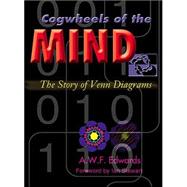
A. W. F. Edwards is, like John Venn before him, a fellow of Gonville and Caius College, Cambridge. He is the author of Likelihood and Pascal's Arithmetical Triangle, both available from Johns Hopkins.
| Foreword, by Ian Stewart | ix | ||
| Preface | xv | ||
| 1. John Venn and His Logic Diagram | 1 | (16) | |
|
|||
|
|||
|
|||
|
|||
|
|||
|
|||
|
|||
|
|||
|
|||
|
|||
| 2. Rings, Flags, and Balls | 17 | (12) | |
|
|||
|
|||
|
|||
|
|||
|
|||
|
|||
|
|||
|
|||
|
|||
|
|||
|
|||
| 3. Five and More Sets | 29 | (18) | |
|
|||
|
|||
|
|||
|
|||
|
|||
|
|||
| 4. The Gray Code, Binomial Coefficients, and the Revolving-Door Algorithm | 47 | (14) | |
|
|||
|
|||
|
|||
|
|||
|
|||
| 5. Cosine Curves and Sine Curves | 61 | (16) | |
|
|||
|
|||
|
|||
|
|||
|
|||
| 6. Ironing the Hypertube | 77 | (7) | |
|
|||
|
|||
|
|||
|
|||
|
|||
| 7. Diagrams with Rotational Symmetry | 84 | (11) | |
|
|||
|
|||
|
|||
|
|||
|
|||
| Appendix 1. Metrical Venn Diagrams | 95 | (6) | |
| Appendix 2. A Rotatable Edwards-Venn Diagram | 101 | (4) | |
| References | 105 | (4) | |
| Index | 109 |
The New copy of this book will include any supplemental materials advertised. Please check the title of the book to determine if it should include any access cards, study guides, lab manuals, CDs, etc.
The Used, Rental and eBook copies of this book are not guaranteed to include any supplemental materials. Typically, only the book itself is included. This is true even if the title states it includes any access cards, study guides, lab manuals, CDs, etc.